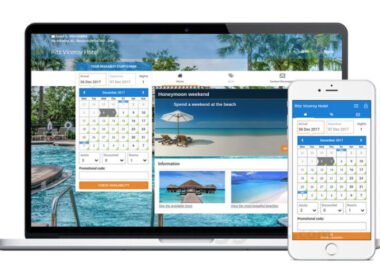Dealing with immigration paperwork used to feel like trying to juggle flaming swords while riding a unicycle. You knew there was a way to get through it, but it sure wasn’t going to be easy.
Now, with digital transformation, it’s like someone handed you a fireproof, and suddenly the process looks much less like a circus act.
No more waiting in endless lines, fighting with stacks of documents, and anxiously hoping your paperwork doesn’t get lost in a bureaucratic Bermuda triangle.
Let’s discover how technology is changing the game for immigration and why it’s a win for everyone.
Faster and More Accessible Immigration Processes
Remember when immigration applications meant printing dozens of pages, filling them out by hand, and mailing them hoping for the best?
Those days are behind us. Many countries introduced digital platforms after COVID-19 forced them to rethink their old ways. What started as a temporary solution has now become the norm.
Governments are now digitizing their systems, making it possible to apply for visas, work permits, and residency online.
These new systems mean fewer in-person visits and less time spent navigating clunky, outdated bureaucratic processes.
Instead of taking a day off work just to visit a government office, you can now complete everything online from your home in minutes.
If you find it difficult at any moment, don’t hesitate to consult with experts such as Spar & Bernstein’s Immigration & Personal Injury Lawyers and ensure your application is done properly.
Besides saving time, digital platforms also come with the following benefits:
- More transparency – You can track your application status in real time instead of waiting months for updates.
- Faster processing times – Automated systems reduce delays and cut out unnecessary back-and-forth.
- Lower costs – When you have less paperwork you will have fewer administrative expenses.
That’s not to say everything is perfect. Technical glitches can still happen. Sometimes, systems crash at the worst possible moment (looking at you, online tax portals).
But overall, digital transformation has significantly improved how immigration processes work.
Emergence of Compliance Tools
If you think immigration laws are complex, wait until you see how they interact with tax and labor regulations. It’s like trying to untangle a pair of wired headphones that have been in your pocket for too long.
As digital systems become more widespread, governments are connecting databases across different departments.
Take the U.S., for example, if an employer breaks labor laws, like failing to pay the right wages or misclassifying workers, they not only face a hefty fine but also risk restrictions on hiring foreign talent.
This is simply because agencies like the Department of Labor (DOL) and U.S. Citizenship and Immigration Services (USCIS) share information.
This means even minor irregularities can raise red flags and impact a company’s ability to sponsor work visas.
To stay on top of things, both companies and immigrants are turning to helpful compliance tools, like:
- E-Verify – An online system that lets employers quickly check a new hire’s work eligibility by cross-referencing their information with government databases.
- I-9 Compliance Software – Digital platforms that ensure I-9 forms are filled out correctly and securely stored, cutting down the chances of costly mistakes.
- Workforce Management Systems – Software that tracks visa expirations, work authorizations, and compliance deadlines, helping companies stay on top of employee status.
- Avalara: Tax Compliance Software – Program that helps employers navigate tax obligations related to foreign employees, preventing unexpected liabilities.
Some platforms, like OnBlick, even alert employers if their policies are out of sync with the latest regulations. It’s like having a personal immigration assistant, except it doesn’t take coffee breaks.
How Technology Helps Immigrants Adapt
Immigration isn’t just about getting a visa. Once you’ve arrived in a new country, there’s a whole other challenge and that is figuring out how to go about your daily life.
Yes, technology is making this transition smoother as well.
Think about language barriers. In the past, if you moved to a country where you didn’t speak the language, you either had to take expensive language classes or rely on a lot of hand gestures.
But now, you’ve got instant translation apps that let you communicate on the spot.
Plus, if you’re dealing with legal documents, AI-powered tools like Lawgeex, can scan contracts and break them down into simple terms, so you don’t end up signing something you don’t fully understand.
The Future of Immigration in a Digital World
Digital transformation is here for the long haul, and it’s reshaping immigration in ways we’re only beginning to see. Sure, there are still challenges, like technical hiccups and shifting policies, but the positives are well worth it.
Here are some bold predictions:
- Faster, smarter applications: Thanks to AI and machine learning, governments will soon be able to spot mistakes early on, cutting down delays and saving everyone from those annoying hold-ups.
- Simpler compliance for businesses: Advanced software and compliance tools will take the guesswork out of regulations, and companies will have more time to focus on growth rather than worrying about staying compliant.
For immigrants, this would mean:
- Faster applications with fewer errors
- Greater transparency and control over their immigration status
- Improved job opportunities in countries that prioritize digital solutions
For businesses, this would mean:
- Smoother compliance processes
- Better access to global talent
- A competitive edge in attracting skilled workers
Final Thoughts
Digital transformation has turned immigration from an outdated, paper-heavy ordeal into a more modern, accessible process.
Governments are adopting technology to make applications faster, compliance stricter, and integration easier.
But like any major change, it comes with challenges. Tech glitches happen and regulations evolve, and remote work policies are still a gray area. The key is to stay informed, use available digital tools, and approach immigration strategically.
Whether you’re an employer hiring global talent or an immigrant navigating the legal jungle, technology is your best friend.
And hey, at least you don’t have to wait in those never-ending government office lines anymore. That alone is worth celebrating.










